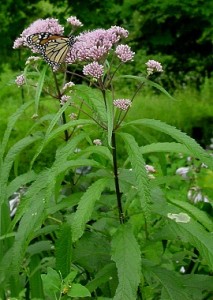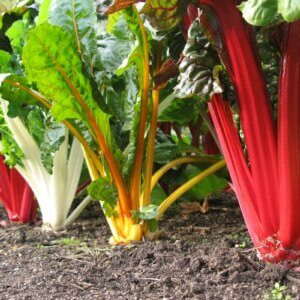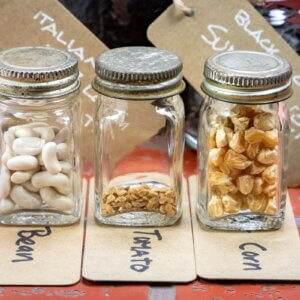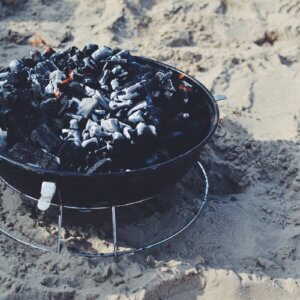
Rain gardens attract birds and butterflies (and bees), while protecting local streams and ponds. These gardens are planted with flowers, shrubs and grasses that are easy to maintain and thrive without fertilizers and pesticides.
Where to place a rain garden, how to select plants and how to keep the garden flourishing as a beautiful accent for your home or business is key to your successful garden.
The rain garden will cleanse the water that runs off from your yard and driveway during storms. Rain gardens also allow this runoff to seep into the ground and replenish streams during dry seasons.
If you have a slope or wet spot at the bottom of a hill, these might be good locations for a rain garden. If there is standing water there most of the year, then choose another spot. A good location might be damp or receive the drainage from a building roof or parking lot. This can be a particularly attractive way to handle run off from parking lots for small businesses. Not only will your business look good but it be doing good as well.
Building
Once you have a spot that lovely and damp, now it is time to build. You are going to essentially cover your wet spot or drainage area. Look at the space and consider if you will need to use wood, rocks, or other building materials to retain the soil. This garden needs to have some depth – plan on at least three feet deep.
If you are going to be collecting the run off from a parking lot or roof, you will need to give the water a chance to slow down before entering the garden. You can do this by having it run over stones before ending – essentially creating a river bed.
Block off the area and build it up so it can accept the fill, dirt, plants and mulch to come.
Filling
Fill your prepared space with sandy soil to allow for good drainage of the water. This will be held in by the structure you prepared and the slowly released. Fill the space about three quarters full. On top of this, add loose garden soil or fine mulch. Compost will help the plants you add to grow strong and healthy. Avoid water based fertilizers as they can be washed away quickly.
Plants
This is where the fun begins. You want to go to your local garden center and look for plants are tolerant of both wet and dry conditions. Usually this is listed on the tag. Choose plants that are low maintence and native to your location.
Some good places to start are things like daisies, asters, boneset, Joe Pye weed, dogwoods, and many types of ferns. If you place your rain garden near roadways and live in areas where roads get salted in the winter, check to make sure the plants you choose are not only drought tolerant but salt tolerant as well.

Mulch
You will need to water your new plants until they are established so a good two inches of mulch will help keep the water in the garden.
Rain gardens and other simple solutions can prevent problems and restore community uses of local waters.
Enjoy!
It may take a few weeks for your garden to become established. Then you can sit back and enjoy the beauty of the flowers and the buzz of the bees.










































Leave a Reply